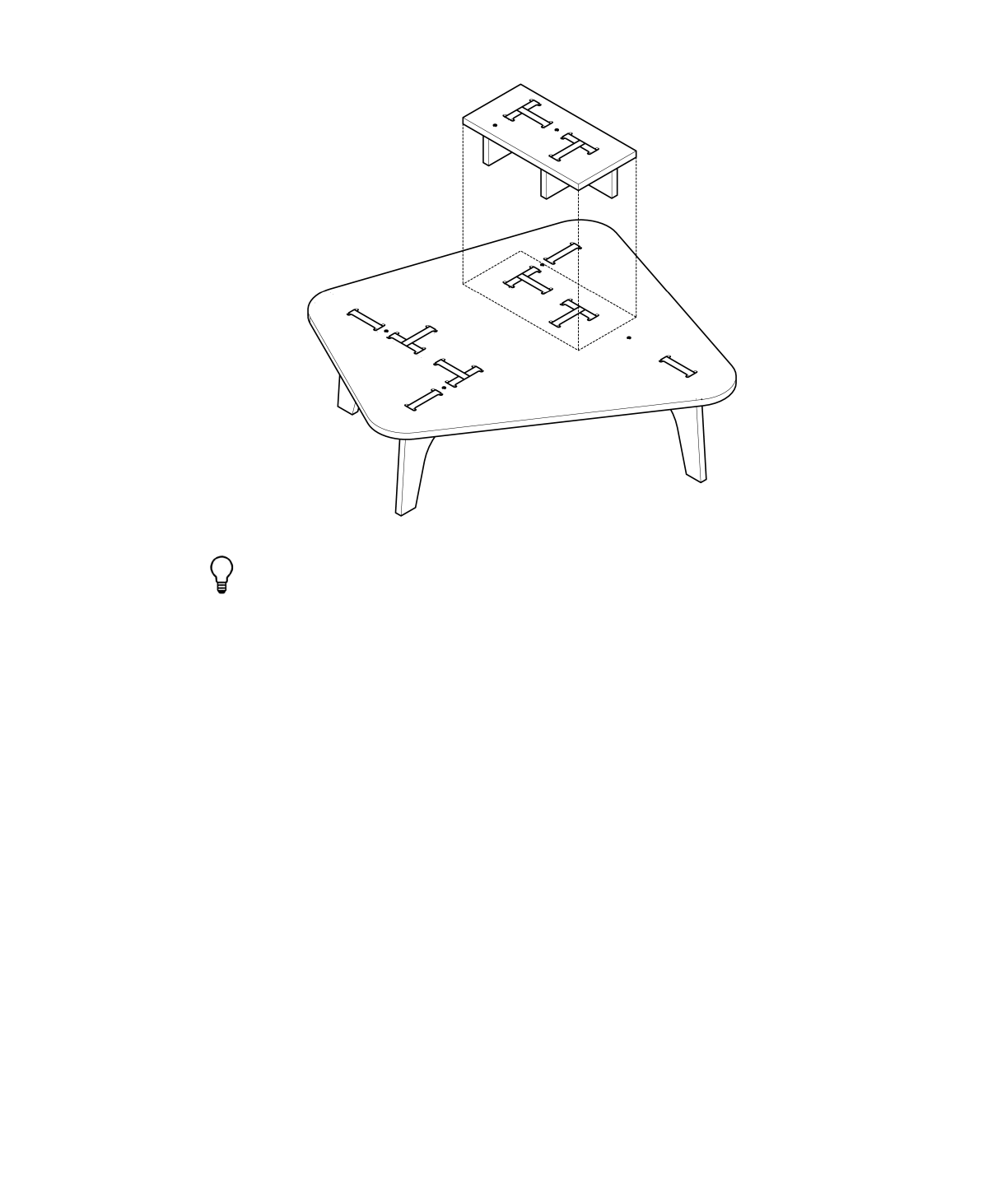
FIGURE 9-2
Test piece for Cat in
Bag ii Table
Most products indicate the amount of surface
coverage right on a package, making it easy to
figure out how much finish you need when
working with flat parts. Simply calculate the
surface area of both sides of all 2D parts and
select the correct amount of product.
PARTIAL PROTOTYPING: USING A
TEST PIECE
The Cat in Bag ii Table (and the projects we’ll
work on after it) involves much more material
and cut time than the Rotional Stools. Although
the measuring and scaling process is intended
to produce flush-fitting joinery, what happens if
you’ve incorrectly recorded material thickness
or accidentally scaled by the wrong factor?
Testing the joinery fit with a small, partial proto-
type, or test piece (introduced in “Test Pieces”
on page 136), is an important step that will help
prevent cutting an entire table with incorrect
settings—avoiding frustration and material
waste.
The Cat in Bag ii test piece, shown in
Figure 9-2, simulates the critical joints where
the tabletop and interlocking legs intersect.
Since the test piece is much smaller in size
than the table, you can easily cut several ver-
sions of them (if necessary), in order to estab-
lish the settings for a perfect fit.
Next, you’ll walk you through the process of
using a test piece. You’ll scale the test piece
CAD file (AtFAB_CiBii_TEST.skp), define CAM
settings, cut the test piece from your material
stock, and evaluate the parts for a proper fit.
After you have a test piece with joinery that fits
perfectly, you’ll apply those exact CAD scaling
and CAM settings to the table file
(AtFAB_CiBii.skp) and confidently proceed with
cutting the table from your material.
212
